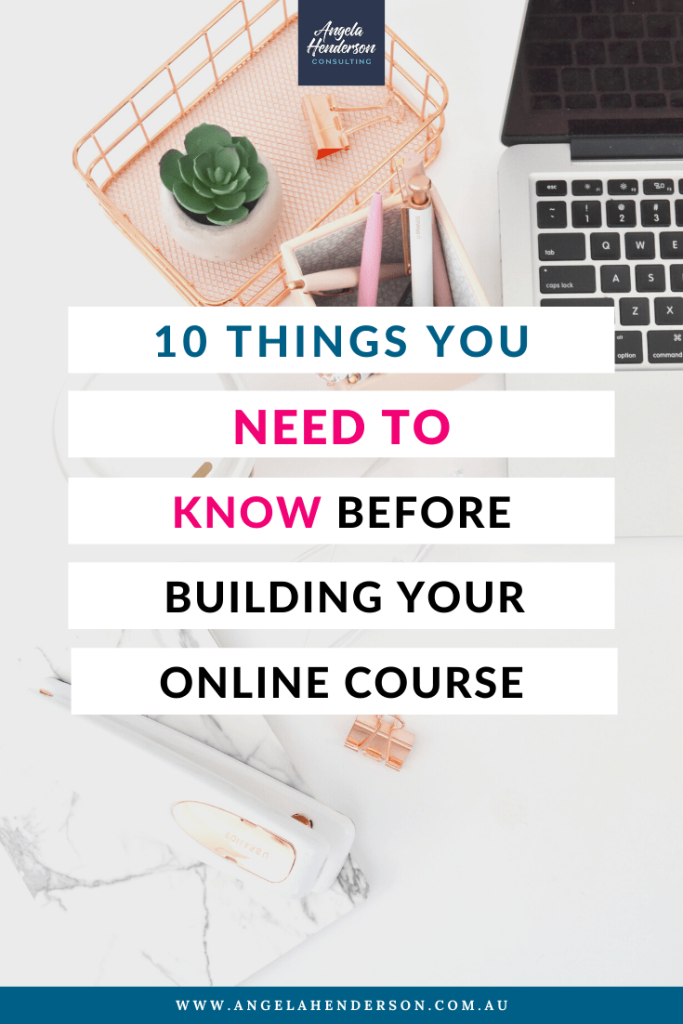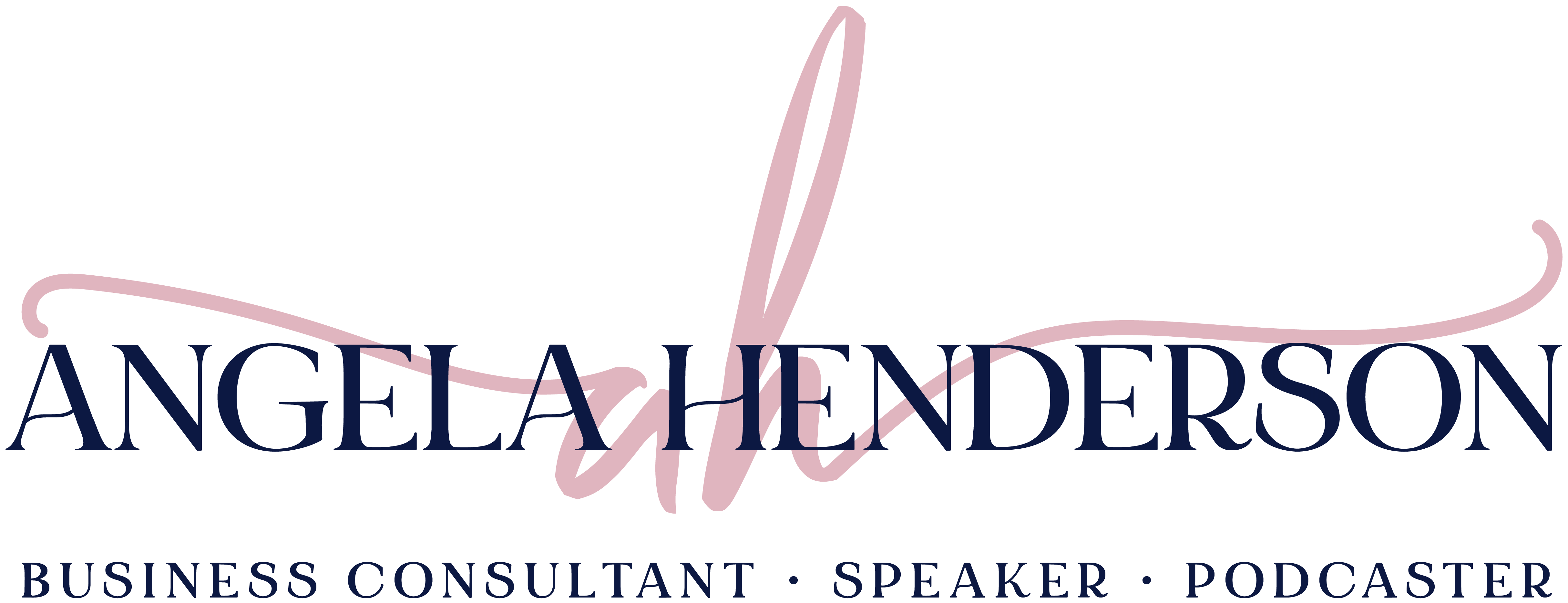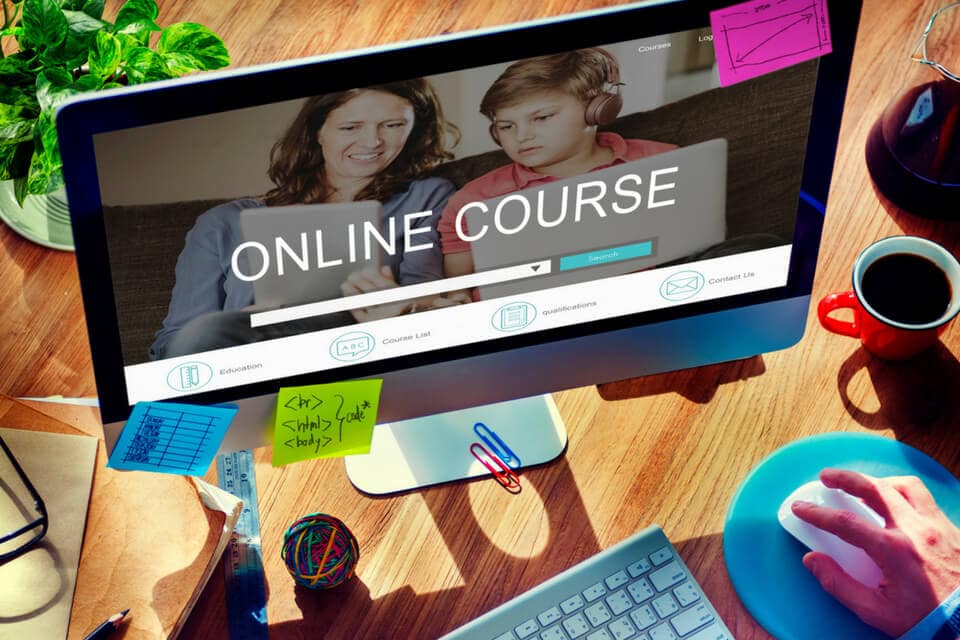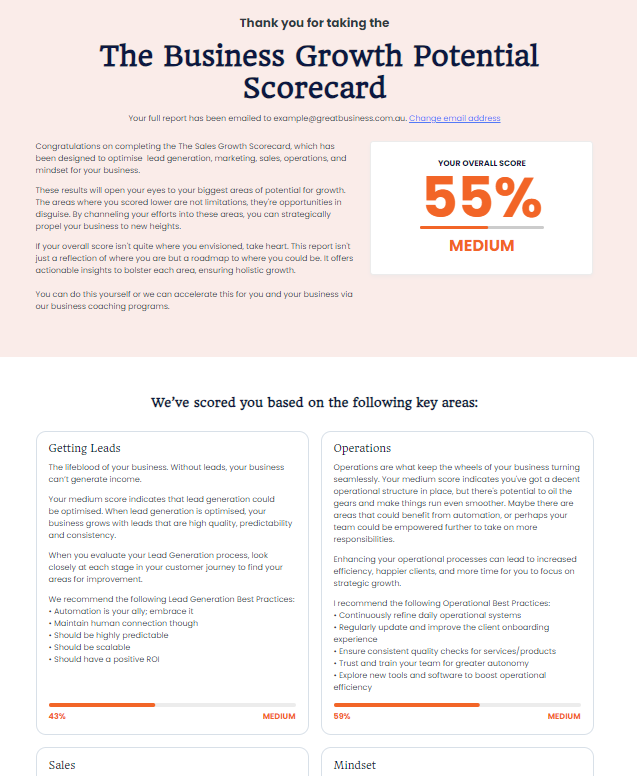
One way to reach a larger audience with your service offering is to create an online course around your area of expertise. But before diving into creating your course there are some things you should know first.
1. It’s not about you.
Writing a course has nothing to do with you and everything to do with your audience. It’s not an opportunity to showcase how much you know. In fact, it is almost the opposite.
You’ve been honing your craft and learning your skill set for years (some women I’ve built courses with have been working in their field for over 25 years). But there is no way you can include 25 years of knowledge in just one course.
This isn’t about how much you know, or even creating your trademark, signature program… this is about making something specific, just for them.
You need to take ego out of the equation.
2. Make sure you know your audience, inside out
Because your course is being built to serve your audience, you need to know them really well.
What do they know already? What do they want to know?
There is no point in creating a course for start-ups if your audience has several years’ experience and vice versa.
How do they like to consume content? There is no point recording dozens of videos if they prefer to listen to podcasts on the go.
When are they online? There is no point hosting live support calls at 8am, if that’s when they are trying to deal with getting the kids ready for school.
Are they looking for an instant, quick fix, or long-term support? There is no point in selling a huge 12-month supportive course if they are looking for something which gives instant results.
Knowing the answers to these sorts of questions will not only make your course easier to build, it will make it much easier to sell.
3. Solve one specific problem
You can’t put all your knowledge into just one course. It just isn’t possible, it doesn’t fit.
Pick one very specific problem to solve.
You can research your audience and run surveys to find out what they think they want to learn… but make sure you drill down to one specific issue, rather than trying to cover a whole gambit of problems.
For example, it is much easier to build and sell a course that teaches setting up a Pinterest account… then one that teaches Pinterest in general.
4. Don’t add too much
This is easier said than done. We are driven to add more and more, in an effort to add value… but at the end of the day, it’s not valuable to them if they never use it. Too much content is simply overwhelming. You want your participants to get through all the content and implement it so that they can get great results.
You will find that you end up cutting lots of content out, rather than trying to add more in.
Don’t just delete that content, keep it safe. You can use it for your next course or add it as bonus content.
5. Think about delivery
Do you need videos? What about audio? Do you want to have printables and downloadable content? What about a workbook? Will you offer live support calls?
Do you want them to be able to complete assessment along the way?
Start to think about some of these things at the beginning as it may change the way you build your content.
6. Courses take time
I’m all for pre-selling, but if this is your first online course, make sure you have written, recorded and built your first module before you try and pre-sell your whole course.
Courses can take a lot of time to build, especially if this is your first course. Tasks that you thought would take minutes might take hours of fiddling and editing. By building one module before you try and pre-sell you will have an understanding of how long the process took you and allow you to create realistic estimates for when you will be able to deliver the course.
7. Courses aren’t passive
While you can definitely make leveraged income, they aren’t completely passive.
Even if you are going to build a course that doesn’t come with live calls or support… you’ll need to put active work into selling the course, and even tech support for when issues come up.
As with anything, there is always work involved.
I’m all for building courses, making sales while you sleep and making leveraged income by offering group programs, but there is always work involved to get there.
8. It’s all about support
You CAN sell a course where they only get access to content, which they do at their own pace… but (and there is always a but), I don’t recommend it.
Let’s be honest, if your participants just wanted the content they could probably find it online.
Realistically, people don’t buy courses for just the content. They want a helping hand, they want personalised support, they want to know if what they are doing is right or wrong, and they want to interact with others who are doing the same thing.
Courses aren’t just about the content.
9. Courses need to be sold
This isn’t a case of “build it and they will come”. Courses don’t magically sell themselves (although we all wish they did).
Take time to build your audience, connect with them and support them. Make sure that the course you are building assists them and solves their problems.
And make sure that you have a well-written sales page and a realistic marketing plan. You’ll need to put some effort into this.
10. There are lots of options when it comes to tech
There are lots of different options to put your course online.
Do you want to host the course on your own website?
Do you want to use a course platform so that you don’t have to worry about doing so much of the tech work?
Do you want to put your course on a platform that actively promotes courses, like Udemy? (Note: There are lots of pros and cons to these platforms, make sure you are aware of them before you add your course to one of these platforms)
There are lots of different ways you can get your content online, that will suit your technical ability, your participants’ needs and your budget.
Don’t get too caught up in all the different option, do a little research, then pick one and run with it.
And as a bonus….
11. You can do this
The first 10 points might seem a little overwhelming, but you can do this.
Adding courses to your online products and services is a great way to grow your income and serve your audience.
You can have a great online course.
Just break it down into little steps and start by getting everything out of your head and making some notes.
You’ve got this.
Have you created your own online course? What did you find was the most important factor?
Have an awesome day,
Sam
About the Author
 Sam helps busy service providers take all of that knowledge out of their head and turn it into a sellable course or membership product, so they can stop working so many face to face hours. If she’s not busy creating courses or pulling all of that wisdom out of your head, then you’ll find her kid wrangling and making terrible sandwich related puns about her name. You can find out more about her at samwinch.com.au
Sam helps busy service providers take all of that knowledge out of their head and turn it into a sellable course or membership product, so they can stop working so many face to face hours. If she’s not busy creating courses or pulling all of that wisdom out of your head, then you’ll find her kid wrangling and making terrible sandwich related puns about her name. You can find out more about her at samwinch.com.au









